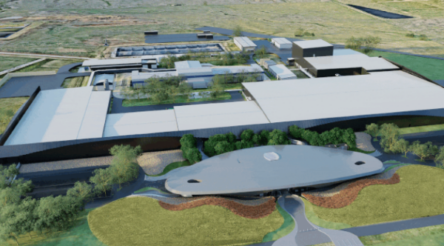Gupta’s Liberty steel play – BHP Steel writ large

Comment by Peter Roberts
British businessman Sanjeev Gupta has announced a restructuring of his iron and steel making empire, using the very same strategy employed to build Australia’s steel industry, but on a global stage.
As reported by @AuManufacturing, Gupta’s GFG Alliance is restructuring its UK steel and engineering assets, the Liberty Primary Steel works in Whyalla, Australian coal and iron ore mines, and the European ArcelorMittal plants
Gupta said: “This combination will form a global champion, shipping iron ore and coking coal and semi-finished product from Australia to its manufacturing plants and mills globally, with the target of becoming one of the largest and most competitive fully integrated steel and mining producers in the world.”
This is exactly the strategy employed by then BHP Steel to build Australia’s steel industry, and that has been mooted as a value-adding play for northern Australian resources assets ever since.
BHP then was a more diversified and capable operation than it is today, having a keen understanding of value-adding of resources and a belief in the role private industry could play in nation-building.
It constructed and operated iron ore mines with names such as Iron Knob and Iron Baron and a steel mill at Whyalla in South Australia, and coking coal mines and steel plants at Port Kembla and Newcastle in New South Wales.
The company’s own ships, with evocative Australian names such as Bogong, plied the seas between east and south Australia, taking iron ore east and coking coal south in a super-efficient two-way transport operation.
They also sailed globally taking basic steel products to export markets and seeding BHP downstream operations such as coating and painting lines in Asia.
Downstream processing extended to a myriad of steel products from steel slabs, to wire and coated and painted steel coil in the east, to long-products such as railway track and shipbuilding in the south.
Its steel coil allowed others to make everything from washing machines, to fences and cars, while its rails spanned a continent.
During the great expansion of Australia’s resources sector from the 1970s, Western Australian magnate Lang Hancock pursued a similar strategy for a time – a dream of mega-steel mills, iron ore and coal mines linked across northern WA and north Queensland.
Gupta has already let contracts worth $600 million to expand the capacity of the Whyalla works to 1.8 million tonnes a year.
Plus he has contracted China Metallurgical Group Corporation (MCC) to run a feasibility study into building a new steel plant in Whyalla capable of producing 10 million tonnes a year, the largest in any developed nation.
This would cement Whyalla’s position in Gupta’s BHP-style vision as the supplier of iron ore and primary steel to be shipped globally and value-added locally – it makes sense to add value close to markets.
Some doubts have been raised about Gupta’s ability to delivery on his ambitious global strategy.
But he is undoubtedly reviving Whyalla’s fortunes, just as BlueScope Steel has so comprehensively revived its US, Asian and Port Kembla steel works operations.
But he is a man of steel in the mould of the great Essington Lewis of BHP, who not only created a resources and manufacturing colossus, but led industry’s contribution to the defence of Australia as head of munitions production in WW2.
As a South Australian I may be biased, but I would put my money on Gupta’s ability to create a globally competitive company where BHP ultimately saw only trouble, selling off its crown jewels
Picture: Whyalla steel works
Subscribe to our free @AuManufacturing newsletter here.
@aumanufacturing Sections
Analysis and Commentary Awards Defence Manufacturing News Podcast Technology Videos










